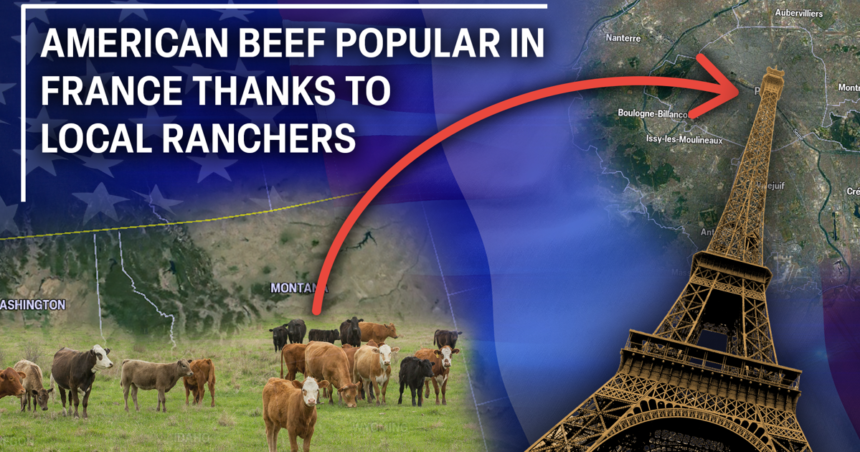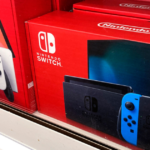Ranches in Washington, Idaho and Montana are leading the charge in making American beef the next big thing in Paris.
PARIS, France — Cowboys and the French may seem worlds apart, but in actuality, they have one major thing in common: the love of good beef.
Many years ago, the idea of selling American beef in France would have been laughed off. But now, because of entrepreneurs, the USDA, a lawsuit and some good old fashion diplomacy, our product is making headway.
Beef agreements and back-and-forth with the European Union continue to this day, but by all accounts the product is being received well.
The largest import market in the European Union, Rungis Market, is based in Paris.
At Rungis, you’ll find massive wheels of cheese, hanging cuts of beef and vegetables as far as the eye can see. Think Pike Place Market but on steroids. Every restaurant and grocery shop in Paris purchases their product at Rungis overnight.
Then it’s sold to consumers in different forms across the city of Paris.
Max Metzger works for his family’s beef import business and that business has been built on American beef.
“To sleep the day and go to the office at midnight, if I don’t like it, I won’t do that,” Metzger said.
Metzger, who speaks fluent French, explained that he has a passion for what he does.
“Company here my father and uncle created 30 years ago,” Metzger said.
The day starts at midnight and ends when everything is sold at around 9 a.m.
“If you come in my fridge and see my brands of meat, united people [Americans] won’t be surprised, but maybe French people will be surprised,” Metzger said.
The French are a tricky people, the truth is, they don’t really love Americans or American products, they have pride in French brands.
So, selling American beef has been an uphill battle. But, Metzger says, slowly, opinions around American beef have changed significantly, and that has a lot to do with companies like Giraudi Meats.
Giraudi Meats helps with imports for other companies but also owns their own restaurants, and at their restaurants they sell American beef.
Essentially, they have been part of the PR machine selling Europeans on the idea of high quality American beef.
“In Paris, American beef’s perception, I think, is elite beef,” Metzger said.
Creekstone Farms based in Kansas and Snake River Farms based in Idaho, have slowly worked their way into the French market through Metzger and Giraudi Meats.
Snake River Farms is headquartered in Boise and their product is a collaborative measure from family ranches around the Palouse, the panhandle and Montana.
Once their beef is slaughtered it’s packaged into boxes and sent to Metzger where it’s distributed, and that’s in part due to a partnership with Giraudi Meats.
Giraudi Meats is based in Monte Carlo, but works with Creekstone Farms and Snake River Farms to get their beef on the table at their restaurants across the globe.
Lara Messie the C.O.O. of the Gerardi Company says American beef has become similar to how we equate champagne from France.
“U.S. Beef for us is extremely high-end,” Messie said. “The quality of the marbling, the flavor, the taste, the experience, it’s just unique.”
And due to that, they’re able to sell something different. A different flavor, a different experience, and start the process of educating a different market about our beef.
Messie explains what’s significantly different is the age and feed. Typically, French beef is older, slaughtered near the five year mark versus the two-year mark for American beef and that makes the taste different and competitive in the market.
“It’s been amazing for us Europeans, to find out how scientific making meat is,” Messie said, “We have been focused on the breed and animal husbandry but less on feed and genetics.”
The USDA reports beef exports have slowly grown with Brazil in China being the largest growing sector. In 2022, the USDA reports the quota usage rate into Europe increased to 52.9 percent, up from 50.1 percent in 2021.
The Gerardi Company has been on the front end of this conversation for the last 25 years.
“Originally it was complicated because of hormones. We don’t treat our cattle with hormones in Europe,” Messie said.
So in order to get American beef on the table, the USDA brought forth lawsuits against the European Union to allow for the trade.
American producers can, if they want, opt in to sell abroad but it requires different rules and regulations they must follow.
According to Messie, there are only about five slaughter houses in the United States certified to do trade with the EU.
“So each cattle breeder is going to have separate pins of cattle and you will have the NHTC ones and they are separated from the rest,” Messie said.
Messie says it’s taken 20 years but the product’s reputation is strong, and it’s being sold for a pretty penny at restaurants operated by her company.
Beef Bar is a prestigious European steakhouse, and just recently they opened their first location in New York City.
Their Paris location has become incredibly popular on the internet among influencers and celebrities. But their view of the Eiffel Tower comes with a side of American beef.
“Paris for us was a big question mark, the largest beef producing country in Europe is France and Paris is a very difficult market,” Messie said.
But business has been strong.
“These connections really the start of a beautiful friendship over food,” David Leishman with the USDA in Paris said.
Leishman, who is from Wyoming and works for the USDA is tasked with helping to get the conversation about our agriculture rolling.
“Beef is a good example of how our relationship is evolving. It’s a way to tell our story of quality also of our knowhow and create value for the French market and the French consumers and our own producers in states like Montana, Wyoming, Idaho. So it’s really food diplomacy.” Leishman said.
Leishman acknowledges that there is still room for improvement and more opportunity. But adds that the progress that we have made, ultimately is creating strong business for American ranchers which in turn builds a strong brand abroad for our country.
As for Messie and company, it’s a product they stick their reputation on and are working to bring to the world.
So the next time you’re in Paris, look closely at the menu because there’s a chance you might be having American beef almost 5,000 miles away from home.





